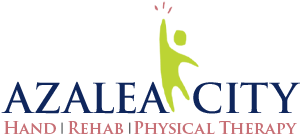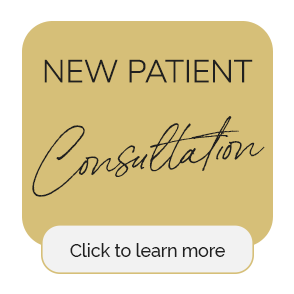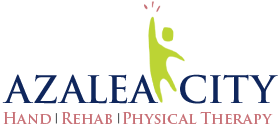Golfer's Elbow Relief Options in Mobile AL

If you're an avid golfer-or even if you've never picked up a club-golfer's elbow in Mobile AL can become a painful reality. This condition isn't exclusive to golfers and can affect anyone engaging in repetitive movements involving the wrist and forearm. Whether you're gripping a golf club, a tennis racket, or even a hammer, golfer's elbow can put a serious dent in your daily routine. But here's the good news: with the right approach, particularly through physical therapy/occupational therapy, you can alleviate your symptoms, regain mobility, and prevent long-term damage.
Azalea City Hand and Rehab and Physical Therapy has information about golfer's elbow, from what it is and how it's diagnosed to the ways physical therapy/occupational therapy can help you recover and get back to your favorite activities.
What Is Golfer's Elbow in Mobile AL?
Golfer's elbow, also known as medial epicondylitis, is a condition that causes pain and inflammation on the inside of your elbow. The condition occurs when the tendons that attach your forearm muscles to the bony bump on the inside of your elbow (the medial epicondyle) become irritated or damaged.
The primary muscle group affected by golfer's elbow is the flexor-pronator group, which is responsible for bending the wrist and rotating the forearm. The repetitive motion of these muscles, especially during activities that require gripping or twisting, can lead to small tears in the tendons, resulting in pain and inflammation.
Golfer's elbow is similar to tennis elbow, but while tennis elbow affects the outer part of the elbow, golfer's elbow affects the inner side. Despite its name, golfer's elbow doesn't just affect golfers-it's common in many other sports and occupations that involve repetitive arm movements.
Symptoms of Golfer's Elbow in Mobile AL
If you're wondering whether the discomfort in your arm is golfer's elbow, there are several telltale symptoms to watch out for. These symptoms can range from mild to severe and may worsen with certain activities. Common signs of golfer's elbow include:
- Pain and Tenderness on the Inside of the Elbow: The hallmark symptom of golfer's elbow is pain that's localized to the inner part of your elbow. This pain may radiate down the forearm and worsen with gripping, lifting, or twisting motions.
- Stiffness: You might notice stiffness in the elbow, particularly when you try to make a fist or fully bend your arm. This stiffness can make simple tasks, like holding a coffee cup or shaking hands, feel difficult.
- Weakness in the Hand and Wrist: As golfer's elbow progresses, you may find it challenging to grip objects, open jars, or carry groceries due to weakened muscles in the hand and wrist.
- Tingling or Numbness: In some cases, golfer's elbow can cause tingling or numbness that radiates from the elbow down to the ring and little fingers, making it uncomfortable to perform fine motor tasks.
The pain from golfer's elbow typically comes on gradually and may worsen over time if left untreated. If you're experiencing these symptoms, it's important to address the issue early to prevent long-term complications.
What Causes Golfer's Elbow?
Golfer's elbow is caused by overuse or repetitive stress on the tendons and muscles of the forearm. While it's commonly associated with golfing, it can result from a wide variety of activities that involve similar motions. Here are some of the most common causes:
- Repetitive Motions
The primary cause of golfer's elbow is repetitive wrist and forearm motions, particularly those that involve gripping or twisting. Sports such as golf, tennis, baseball, and even weightlifting can lead to this condition. Additionally, occupational tasks like painting, carpentry, and typing can place repetitive strain on the forearm tendons, increasing the risk of injury. - Improper Technique
Using improper form or technique during activities that involve repetitive wrist movements can put additional strain on the tendons of the elbow. For example, a golfer who grips the club too tightly or a tennis player with poor backhand form is more likely to develop golfer's elbow. Similarly, manual laborers who use incorrect body mechanics while lifting or using tools are at higher risk. - Weak Forearm Muscles
Weak or imbalanced muscles in the forearm and wrist can contribute to golfer's elbow by placing extra stress on the tendons during repetitive activities. If the muscles are unable to handle the load, the tendons may become overworked and inflamed. - Age-Related Wear and Tear
As we age, tendons lose some of their elasticity and become more prone to injury. This natural degeneration can make it easier for repetitive movements to cause inflammation and small tears in the tendon fibers.
How Is Golfer's Elbow Diagnosed?
If you suspect you have golfer's elbow, it's essential to get a proper diagnosis to confirm the condition and rule out other potential issues, such as arthritis or nerve compression. Here's what you can expect during a diagnosis:
1. Physical Examination
Your healthcare provider or physical therapist will start by examining your elbow, forearm, and wrist. They'll check for signs of tenderness, swelling, and limited range of motion. You may be asked to move your wrist or elbow in specific ways to identify which movements trigger pain.
2. Range of Motion and Strength Tests
Your provider will likely conduct tests to assess the range of motion and strength in your wrist and forearm. These tests help determine how much flexibility and strength have been affected by the condition.
3. Imaging Tests
In some cases, your healthcare provider may order imaging tests such as X-rays, MRIs, or ultrasounds to get a more detailed view of the tendons and rule out other conditions. These imaging tests can help confirm the diagnosis and provide insight into the extent of the damage to the tendons.
Once golfer's elbow is diagnosed, the next step is developing a treatment plan that addresses both the symptoms and the underlying cause of the condition.
How Physical Therapy/Occupational Therapy Helps People with Golfer's Elbow
Physical therapy/occupational therapy is one of the most effective treatments for golfer's elbow, offering a non-invasive approach to pain relief, mobility restoration, and long-term prevention. Here's how physical therapy/occupational therapy can help you recover:
- Pain Relief and Inflammation Management
The first goal of physical therapy/occupational therapy is to reduce pain and inflammation in the affected tendons. Your physical therapist will use various techniques to alleviate discomfort, including: -
- Manual Therapy: Hands-on techniques such as massage and soft tissue mobilization can help improve circulation, relieve tension in the muscles, and reduce inflammation in the tendons.
-
- Cold Therapy: Applying ice packs or cold compresses to the affected area can help reduce swelling and numb the pain.
-
- Electrical Stimulation: In some cases, electrical stimulation may be used to target the tendons, reduce pain, and promote healing.
- Restoring Flexibility and Range of Motion
Tendons affected by golfer's elbow can become stiff and limit the range of motion in the wrist and elbow. Physical therapy/occupational therapy focuses on restoring flexibility through targeted exercises: -
- Stretching Exercises: Your therapist will guide you through gentle stretching exercises that improve flexibility in the wrist, forearm, and elbow.
-
- Joint Mobilization: In some cases, your therapist may use joint mobilization techniques to restore full range of motion in the elbow and wrist.
- Strengthening the Affected Muscles
Strengthening the muscles in the forearm, wrist, and elbow is crucial for supporting the tendons and preventing future injury. Physical therapy/occupational therapy includes exercises designed to build strength and endurance in these muscles: -
- Resistance Training: Using resistance bands or light weights, your therapist will guide you through exercises that target the forearm and wrist muscles, helping you regain strength without overloading the tendons.
-
- Eccentric Exercises: Eccentric exercises, which involve lengthening the muscle while it's under tension, can help repair and strengthen the damaged tendons.
- Correcting Technique and Body Mechanics
One of the key aspects of physical therapy/occupational therapy is teaching you how to modify your movements to prevent re-injury. Your therapist will assess your technique and provide tips on how to improve your body mechanics during activities like golf, tennis, or manual labor. They may also suggest ergonomic adjustments to your workspace to reduce strain on your forearm tendons. - Long-Term Prevention
Physical therapy/occupational therapy doesn't just focus on treating current symptoms-it also helps you prevent future flare-ups. Your therapist will provide you with a personalized home exercise program to continue strengthening your forearm and wrist muscles after therapy ends. By building resilience in these muscles, you'll be better equipped to handle repetitive motions without putting undue stress on the tendons.
What Should You Do If You Think You Have Golfer's Elbow?
If you're experiencing symptoms of golfer's elbow, it's important to take action early to prevent the condition from worsening. Here's what you should do:
- Rest the Affected Arm: Give your arm a break from the repetitive motions that may have caused the condition. Avoid gripping, lifting, or twisting activities until you've been evaluated by a healthcare provider.
- Apply Ice: To reduce inflammation and numb the pain, apply an ice pack to the inside of your elbow for 15-20 minutes at a time, several times a day.
- Consult a Physical Therapist: Early intervention is key to a speedy recovery. A physical therapist can assess your condition, create a personalized treatment plan, and guide you through exercises to strengthen and heal the affected tendons.
- Modify Your Activities: If certain activities are triggering your symptoms, consider modifying your technique or using ergonomic tools to reduce strain on the tendons.
Swing Back to Health with Physical Therapy/Occupational Therapy
Golfer's elbow can be a frustrating and painful condition, but it doesn't have to keep you from doing the activities you love. With the right physical therapy/occupational therapy approach at Azalea City Hand and Rehab and Physical Therapy, you can reduce pain, regain mobility, and strengthen your arm to prevent future injuries. If you think you have golfer's elbow, don't wait-schedule a consultation with a physical therapist today. Let's work together to get you back on the course, court, or field-stronger and pain-free.
OFFICE HOURS
Monday
8:00am - 5:00pm
Tuesday
8:00am - 5:00pm
Wednesday
8:00am - 5:00pm
Thursday
8:00am - 5:00pm
Friday
8:00am - 12:00pm
Saturday & Sunday
Closed
Azalea City Hand and Rehab and Physical Therapy
316 S Sage Ave Ste C
Mobile, AL 36606


